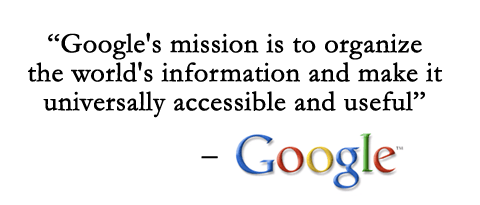Originally published Sunday, 21 April 2013 on Dusty World
 |
| Tools provided and time to practice the theory learned. Skills are expected to be demonstrated. |
A couple of weekends ago I went to Conestoga College and took my motorcycle training course. Other than about an hour on a dirt bike a year ago I’d never ridden a motorbike, but it has been a lifelong dream to do it; I was pretty pumped. Learning to ride was a pedagogically charged process for me, going from near zero to basic competence in a single weekend.
This weekend I’m at the Ontario Google Summit. I’m an advanced digital technology user and I’m attending this conference to look at ways to manage technology and ease adoption for beginners. This isn’t a learning challenging situation for me, but I love the subject area (I teach it) and I’m a trained professional in information technology. I’m keen to see technology use improve in education.
I’m finding myself comparing the two learning experiences. Bike course and Google Summit are both expensive in terms of time and money: both demand your time on a weekend and neither are cheap: motorbike: $18.33/hr, Summit: $17.83.hr. This kind of time and money commitment suggests an intensive, impactful learning opportunity for motivated students. Unmotivated students wouldn’t spend the time and money to attend these things. With that as a foundation I couldn’t have had more different experiences at these two events.
At the motorbike course there were six expert instructors for 26 students for a better than 5 to 1 student/teacher ratio. They moved logistical mountains to provide working technology for all students: over thirty bikes tuned, fueled and ready to use every day along with safe space to use them and a fully equipped classroom with digital media to cover theory. Because a 1:1 student/technology ratio was guaranteed, the focus was all small group, intensive hands-on instruction with lots of one on one instructor feedback. This was vital because the bike course had a theory and practical (road) test at the end, both clearly defined and focused on throughout the course. If you were unable to demonstrate what you knew by Sunday afternoon you just spent over four hundred bucks without getting the license or insurance discount. Attendance was absolutely mandatory, you got dropped for not showing (one guy got dropped Sunday morning after showing up nearly two hours late). You had to bring your own safety kit but the most expensive technology (the bike) was provided, and it got used roughly and dropped by a number of students. You also had to provide your own food and drink and there was time time given to consuming it (we ate during in-class sessions). Intensive, focused and hands on with lots of expert help. A number of of people learned that they shouldn’t be riding motorcycles by the end of the weekend and left very disappointed, but safer for it.
At the end of the weekend you knew what you knew (or didn’t) and had demonstrated qualitative improvement (or hadn’t), resulting in the license and savings. On a more pedantic level, you were provided with the room you needed to learn. You had desk space in a large classroom for learning theory. You had acres of pavement outside for developing hands-on skills in a closely watched and personally assisted learning intensive process. It was a pedagogically credible, physically and mentally challenging process that made demands on you in order to see improvement. My taking the course will probably save my life at some point, as well as saving me money. I left that course having a very clear idea what I’d paid for and no question as to the value of it.

The Google conference is lecture driven (a necessity of the 100:1 student:teacher ratio). The keynotes have been excellent and the audience response very positive. I’ve greatly enjoyed the keynotes. It’s fallen apart for me in the ‘learning’ sessions though; I’ve been unable to attend the sessions I’ve wanted to because the venue (a high school they presumably got access to for nothing) has classrooms designed for thirty odd students. These rooms often had upwards of fifty people jammed into them, sitting on the floor, standing around the edges, all breathing on each other (yes, I have issues with that). I didn’t have the space I need to be comfortable let alone to learn. The provided internet is the best I’ve experienced at a tech-conference, so that’s in place, but the physical space, other than the auditorium I’ve been in all weekend, isn’t remotely up to the task of learning. As I consider the lecture based, knowledge (rather than experience) learning focus of this GAFE Summit, I’m left wondering why educators do this to each other, and how we hope to improve educational technology when we continue to teach it like a poorly designed academic class instead of a set of demonstrable hard skills.
What is it about professional development that has teachers punishing other teachers in order to learn? Ironically, we spent time talking about the Third Teacher and how the learning environment plays such a vital role in learning. We then demonstrate how not to do it in vivid detail with overcrowded rooms and people sitting on floors in order to desperately hear a bit of knowledge out of the mouth of a sage on a stage who are part of a company that wants to radically decentralize and democratize knowledge for everyone… or just squeeze education for some certification money.
There has been a lot of opportunity for learning at this conference for me. The back channels and keynotes have been very engaging. Oddly, the learning sessions haven’t been where learning has happened. Had this been the bike course, I would have spent that weekend sitting on the floor, jammed between other people, watching someone else riding a bike before I went and rode around on my own without any feed back; not the ideal way to learn is it? You’d think teachers would know better.
note: this is six months later, right after the ECOO13 conference (not a summit?) not to mention EdcampHamilton. My feelings about GAFE have only intensified. GAFE is a money grab, designed to funnel teachers into a branding process with Google. After speaking to others at ECOO I’m more than ever convinced that it is a teacher’s professional duty to not brand themselves and offer their students an unbiased access to any and all technology currently in use. Anything less is a limitation to students and irresponsible on the part of the technology educator.



















